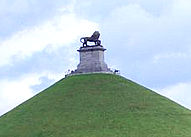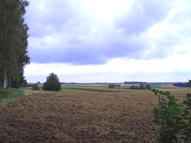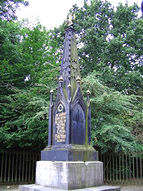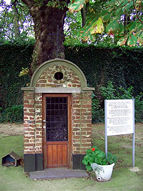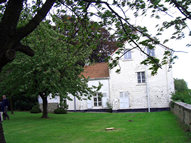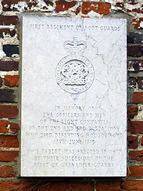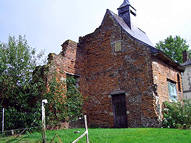 |
 |
 |
Waterloo Tours Details
of Napoleonic Guide Tours of Waterloo soon Words and Photos by John Kay Email
Alan Lindsey for Tour Details
Fascinated by this history-changing clash of arms it was an easy choice to visit the compact battlefield while travelling in Europe. To get a better understanding of Waterloo we decided to get a local expert - albeit a British one - to lead us around the area. Alan Lindsey, our tour guide who lives in a nearby village, met our party at the railway station and drove us to the site of one of the important clashes of the 100 Days' Campaign at the crossroads at Quatra Bras.
By doing so, the Allies prevented the whole French army combining and allowed the Duke of Wellington time to retreat and concentrate his forces and meet the French onslaught near a small village called Waterloo. Even though almost two hundred years have elapsed since this momentous event and cars and trucks have replaced horses and carts the area is eerily quiet.
We could feel and visualize the thousands of Marshal Ney's cavalrymen charging up the slope and over the ridge expecting to slaughter their fleeing enemy only to find unbroken squares of British redcoats. From the silent ranks poured shot and shell into the surprised French. The ploughed fields of today were head height maize that day and in there several battalions of British troops were concealed waiting for Napoleon's last desperate gamble to launch his formidable Old Guard into the fray. He obliged and they were shot to a standstill, then into retreat and finally butchered as they died to allow their Emperor to make his escape.
Not many to the similar number of French casualties, although one is remarkable, a small ossuary houses their unidentified bones. It is in the grounds of the old Caillou farmhouse, now a museum, containing a comprehensive collection of Napoleonic memorabilia. We ate delicious windfall apples in the orchard where the 'Old Guard' rested on the eve of battle, for many of them this was their last night of life.
The fortified farmhouse of Hougoumont, many of its shattered walls rebuilt, still shows the scars of the fierce firefight that raged around it. Even the trees have never recovered from that day. One can imagine the cries of the wounded and smell the blood, sweat and stench of gunpowder in the quiet chapel that was used as a makeshift hospital.
139 years later their descendents were on their way to liberate Brussels from the grip of yet another dictator. Near the battleground a modern visitors centre contains a large diorama of the conflict accompanied by music and chilling sound effects; a theatre shows two excellent short films, and a museum with waxworks of the generals of both sides. In the various museums around Waterloo there is a plethora of tributes to satisfy Napoleonophiles, but very little evidence of other major players in that days drama, especially the Prussian Commander, Marshall Gebhard von Blucher and the Commander in Chief of the Allies the Duke of Wellington.
Alan Lindsey's skills are not confined to a detailed knowledge of the strategy and tactics involved with the Battle of Waterloo - he is also a very good host. We spent a very enjoyable hour over an excellent lunch accompanied by a fine carafe of Rose from Anjou. Late in the afternoon Alan dropped us off at the railway station completing the most informative and entertaining day of our European holiday.
If you are touring New Zealand then check out TikiTouring for tours and accommodation deals. |
|
|
Napoleon
Bonaparte
|
|
| Career | Portraits |
| Quotes | Family |
| Loves | Letters |
| Plots | Murdered? |
| His will | Places |
|
Era
of Napoleon
|
|
| Powers | Opponents |
| Coalitions | Allies |
| People | Timelines |
| Key sites | Shrapnel |
|
Warfare
|
|
| Campaigns | Battles |
| Armies | Generals |
| Marshals | Winners |
| Glossary | Medical |
| Weapons | 1812 War |
| Uniforms | Battlefields |
|
War
at Sea
|
|
| Naval War | Heroes |
| Artworks | Signals |
| Nelson | Trafalgar |
|
Maps
|
|
| Key Maps | Peninsula |
| Animated | 1796/1800 |
| 1809 | Russia |
|
French
Revolution
|
|
| Revolution | Guillotine |
| Posters | People |
|
Art,
Film, Games
|
|
| Education | Goya |
| Sharpe | Hornblower |
| Books | Movies |
| DVDs | Music |
| Wargames | Images |
| Cartoons | Caricatures |
|
Other
|
|
| About Us | Sources |
| Awards | Sitemap |
| Links | Militaria |
| Miniatures | Reenactors |
| Forum | Quizzes |
| Home | Waterloo Diorama |
